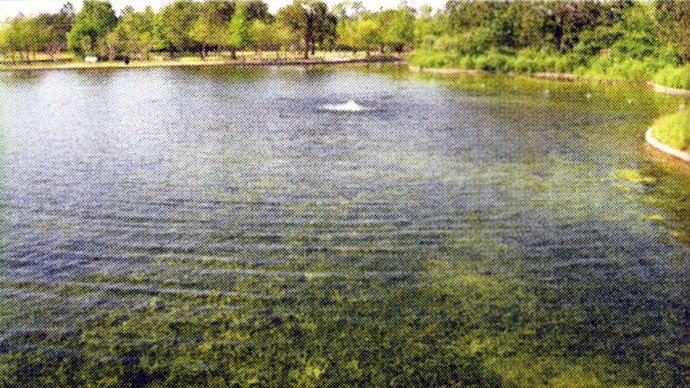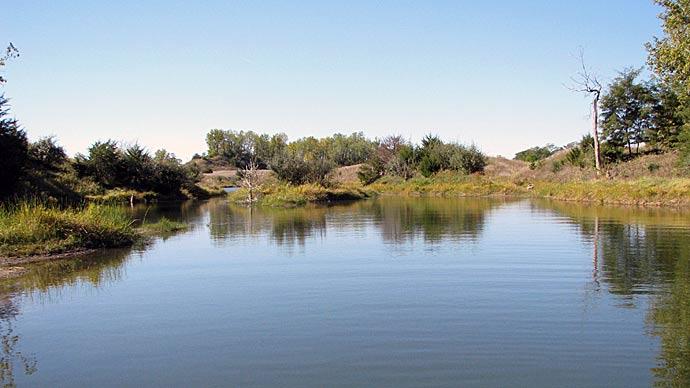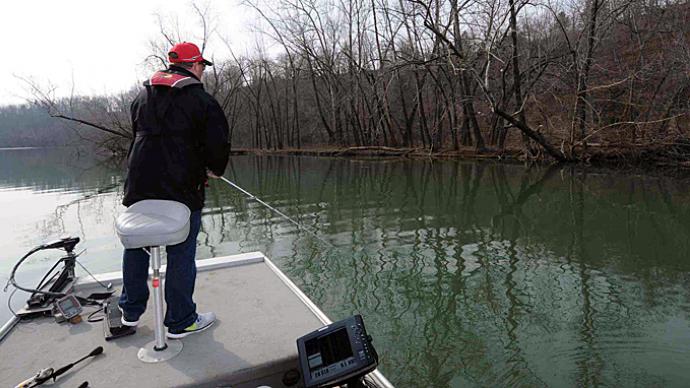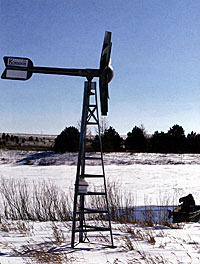
Super-cooling. What the heck is that? Well, let's return to the March/April issue of Pond Boss magazine, where we brought up the possibility that aeration-induced circulation might cause "super-cooling" during the winter months in the North Country. Those of us north of the Mason-Dixon Line have to worry about winter for a good portion of the year!!
Thanks to the good folks who manufacture winter aeration systems we can keep an open hole in the ice on our northern ponds. This hole allows sunlight penetration so algae and aquatic plants can still provide oxygen to the pond during the winter, with less concern about oxygen depletion. The concern among northern pondmeisters has been the potential for super-cooling, if too much circulation is applied to the pond. Water is most dense at 39F. Thus, water on the bottom of a pond is actually the warmest during winter. If the volume of water we circulate is high, we may actually lift so much of that 39F water off the bottom that it cools as it swings past the ice at the top of the pond. If the warmest water temperature at the pond bottom drops substantially below 39F for extended periods of time (i.e. super-cooling occurs), it may have deleterious effects to the fish, perhaps to the point of winterkill. Many fishes cannot survive extended time periods of 33-34F water.
To better understand this issue of super-cooling, we monitored winter temperature and dissolved oxygen at two ponds near Brookings, South Dakota. One pond is 7 acres and has a maximum depth of 20 feet (and a healthy population of smallmouth bass). The other pond is 3 acres with a maximum depth of 18 feet (and has a largemouth bass population). Those ponds probably seem too deep, but we need that much water volume to maintain enough dissolved oxygen to get our ponds through the winter! Each of these ponds is aerated with a Koender's single diaphragm windmill-type aerator located in the deepest portion of the pond (Figure 1). Both aerators are on the pond bottom in the deepest water.
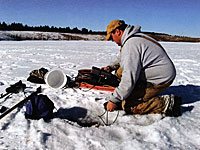
Three submersible temperature recorders were placed into each pond near the aerator. One device was placed below the water surface (but far enough down to avoid freezing into the ice, which last year was around 28 inches!). A second was in the middle of the water column and the third was placed just above the pond bottom. These devices record water temperature every 2 hours. We also went out to the ponds once monthly to collect dissolved oxygen profiles (Figure 2). We were able to collect these measurements from January through March in 2008.
So, what happened?
Well, we observed relatively stable temperatures at the bottom of both ponds (~39-40F) throughout winter. Why were bottom temperatures actually above 39F near the pond bottom? We can't be sure. This could be real, or perhaps the temperature loggers were not calibrated correctly.
As expected, bottom waters were warmest, and temperatures declined as we moved to the middle and top of the water column. A distinct decrease in water temperature occurred in late November and early April. We suspect that these sharp changes in water temperature may be due to "turnover" that occurs twice a year, and probably Occurred during the high winds from a cold front that not only circulated the entire pond, but also dropped the water temperatures. See that dramatic increase in temperature during late April? That is due to the pond warming prior to us pulling the loggers from the ponds.
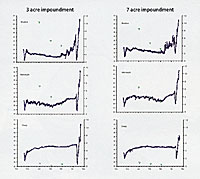
Dissolved oxygen levels decreased as the winter progressed in both ponds. In addition, winter dissolved oxygen declines start from the bottom of a pond and move upwards, and we certainly observed this expected pattern. Interestingly, in the smaller, 3-acre pond, large schools of largemouth bass moved from deep water hangouts during the early winter months to shallower waters (~5 feet) as winter progressed. Even though water temperatures were lower at shallow depths, the fish had to move there to find sufficient oxygen.
As mentioned earlier, super-cooling could possibly be related to the volume of water being circulated by a winter aeration system. If a system is too large for the volume of a pond, then excessive circulation can cause water temperature declines. To determine just how much air volume can be produced by our two wind-driven aerators, we contacted the helpful folks at Koenders. They told us that the single-diaphram aerators produce 25-30 PSI of air pressure. Therefore, in South Dakota winds (which can vary from 0 to 40 miles per hour on any given day), at 25-30 PSI, in 3-acre and 7-acre ponds with maximum depths around 20 feet, we did not experience super-cooling. The water temperature profiles indicated that bottom water temperatures did not drop below 39F for extended periods of time, even during one of our more harsh winters. If you have an electrical aeration system, the aeration-system vendors on the Pond Boss Forum can provide information on just how much circulation you will induce with various capacities of electrical motors.
So there you have it folks. One more interesting tidbit in the continuing saga of winter super-cooling in northern ponds! With the appropriate size of aeration system, super-cooling can be avoided.
Andy Jansen and Dan Spengler are fisheries graduate students at South Dakota State University (SDSU) and Dave Willis is the department head for Wildlife and Fisheries Sciences at SDSU.
Reprinted with permission from Pond Boss Magazine

